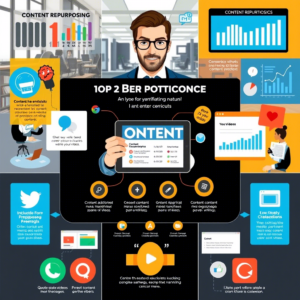Have you ever wondered why some posts go viral while others seem to disappear into the digital void? The answer often lies in timing. Posting at the right moment can make all the difference between a post that gets ignored and one that resonates with your audience, driving engagement and results.
In today’s fast-paced world, where attention spans are shorter than ever, mastering the art of social media timing is crucial for anyone looking to maximize their online presence.
In this article, we’ll dive deep into the science behind optimal posting times. We’ll explore how understanding human behavior, data-driven insights, and platform algorithms can help you craft a strategy tailored to your audience.
By the end, you’ll have actionable tips to boost your reach, engagement, and overall impact on social media. So let’s get started—because timing really is everything!
1. Understanding Your Audience’s Behavior
To post effectively, you first need to know who your audience is and when they’re most active. Social media platforms aren’t just tools; they’re communities made up of real people with unique habits and preferences. For instance, if your target audience consists primarily of professionals working 9-to-5 jobs, it makes sense to avoid posting during business hours when they’re likely busy. Instead, aim for early mornings or late evenings when they’re more relaxed and scrolling through their feeds.
Research shows that different demographics engage differently based on factors like age, location, and interests. According to HubSpot, millennials tend to be most active on weekends, while Gen X users prefer weekdays. Similarly, regional differences matter too—a study by Sprout Social revealed that Americans are most active on Facebook around lunchtime, whereas Europeans show higher activity later in the evening.
Key Takeaway: Use analytics tools provided by each platform (e.g., Instagram Insights, Twitter Analytics) to analyze your audience’s behavior patterns. This will allow you to identify peak engagement periods specific to your followers.
2. Leveraging Data-Driven Insights
Data is your best friend when it comes to optimizing posting times. Platforms like Facebook, LinkedIn, and TikTok offer robust analytics dashboards that provide valuable information about user interactions. These tools can tell you exactly when your content performs best, helping you refine your strategy over time.
For example, imagine running an A/B test where you publish identical posts at two different times of day. If one version receives significantly more likes, shares, or comments, you’ve identified a winning formula. Over time, these small adjustments add up, leading to substantial improvements in performance.
Additionally, third-party tools such as Hootsuite, Buffer, and Later can take your analysis further by aggregating data across multiple platforms. They even suggest ideal posting schedules based on historical trends, saving you hours of manual research.
Pro Tip: Don’t rely solely on averages. While general guidelines exist (like “post on Wednesday mornings”), every brand has its own nuances. Always prioritize personalized insights derived from your specific audience.
3. Adapting to Platform Algorithms
Each social media platform operates under its own set of rules, governed by complex algorithms designed to surface the most relevant content to users. Understanding how these algorithms work can give you a competitive edge in choosing the perfect posting times.
Take Instagram, for example. Its algorithm prioritizes recency, meaning posts shared closer to the current moment appear higher in users’ feeds. However, relevance also plays a role—if someone frequently engages with your content, they’ll continue seeing your updates regardless of timing. On LinkedIn, however, thought leadership pieces perform better during business hours, especially when targeting B2B audiences.
It’s important to note that algorithms evolve constantly. Staying updated with platform announcements ensures you remain ahead of the curve. For instance, recent changes to TikTok’s algorithm now favor authentic, high-quality videos over those with flashy effects, emphasizing creativity over quantity.
Actionable Advice: Tailor your timing strategy to fit the platform you’re using. Experiment with variations until you find what works best for your niche.
4. Balancing Consistency and Flexibility
While sticking to a consistent schedule builds trust with your audience, flexibility is equally important. Life happens, and so do unexpected opportunities. Imagine spotting a trending topic related to your industry—it would be foolish not to capitalize on it immediately, even if it falls outside your usual posting window.
That said, consistency helps establish expectations. Regularly appearing in your audience’s feed keeps you top-of-mind and fosters loyalty. A good rule of thumb is to strike a balance between planned content and spontaneous moments. Tools like Canva or Adobe Express simplify creating quick visuals for last-minute posts, ensuring professionalism no matter the situation.
Another factor to consider is seasonal fluctuations. Holidays, major events, or global happenings can temporarily shift user behaviors. Adjusting your timing accordingly demonstrates adaptability and relevance.
Example: During Black Friday sales, many consumers spend extra time browsing e-commerce sites and social media ads. Brands capitalizing on this trend see significant spikes in engagement compared to regular days.
5. Measuring Success and Iterating
Finally, measuring the success of your timing efforts is essential for continuous improvement. Key metrics to track include impressions, click-through rates, conversion rates, and sentiment analysis. Positive feedback indicates alignment between your timing choices and audience needs, while negative outcomes signal areas requiring adjustment.
Remember, optimization isn’t a one-time task—it’s an ongoing process. As your audience grows or shifts, so too must your strategy. Regularly review your analytics, solicit feedback from followers, and stay informed about emerging trends within your field.
Final Thought: Success doesn’t come overnight. It requires patience, persistence, and a willingness to learn from both triumphs and mistakes. Keep iterating until you achieve the desired results.
Conclusion
Timing your social media posts strategically can transform your digital presence from mediocre to remarkable. By understanding your audience, leveraging data, adapting to algorithms, balancing consistency with flexibility, and consistently measuring progress, you’ll unlock new levels of engagement and impact.
Now it’s your turn! Are you ready to apply these principles to your own campaigns? Share your thoughts below—or better yet, try implementing one of these strategies and report back on how it worked for you. Together, let’s elevate our social media game and create meaningful connections with our audiences.
And remember, timing isn’t just a skill—it’s an art form waiting to be mastered. Happy posting!




